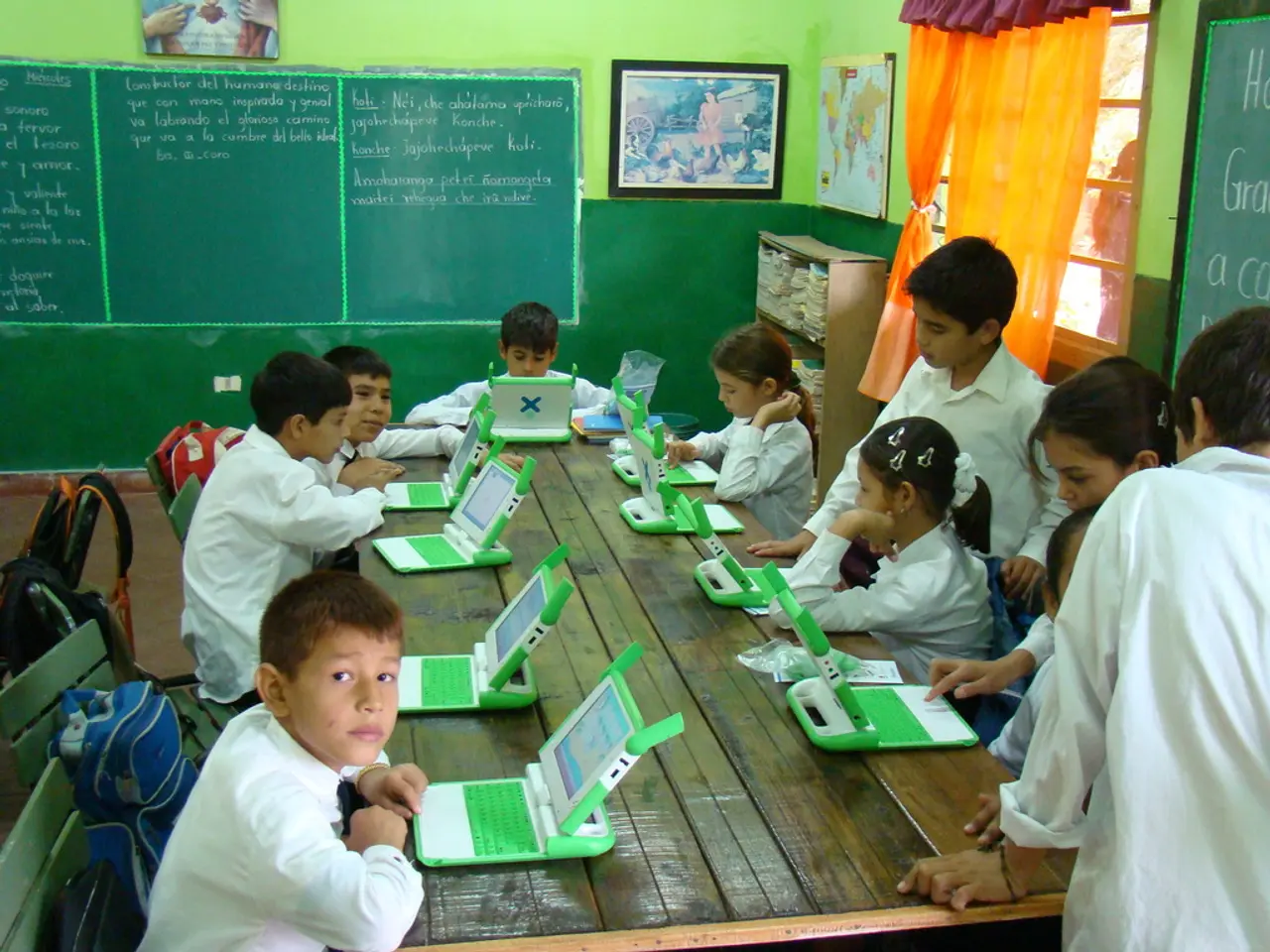Enhanced Innovation Shapes Music Education at the School
UCLA Herb Alpert School of Music Embraces Remote Collaboration Technology
During the pandemic, the UCLA Herb Alpert School of Music took a significant step forward in enabling remote collaboration for its students and faculty. The school implemented technology solutions that allowed musicians to play together with low latency from the safety of their homes.
The school's forward-thinking approach led to the launch of virtual tech workshops, training students and faculty on the new technology. Over 200 people attended the training boot camps, taught by experts and members of the Graduate Council.
One of the technical solutions executed was Audio over Ethernet, which allows real-time audio transmission through the local network using the correct hardware and software. This technology allowed students and faculty to connect from any room at the School of Music with a data port. Six pairs of classrooms were set up in the spring of 2020 with low latency connections for real-time audio and video music sessions.
Customized one-on-one training sessions were offered to students and faculty for specific needs such as software installation and microphone connection. Two software programs, SonoBus and Jamulus, were chosen for their low latency capabilities.
The School of Music's investments in low latency connection have led to Henao serving on UCLA's campus committee focusing on providing a consistent level of AV technology to all classrooms campuswide.
As the School of Music moves towards re-opening, upgrades to classrooms and facilities are being made to allow for safe and effective in-person and hybrid instruction. New digital signage has been installed in five locations throughout the School of Music, displaying messages about facilities, student services, campus announcements, upcoming events, and public announcements. A new screen in the Evelyn & Mo Ostin Music Center Music Café will feature upcoming events and public announcements. A kiosk in the lobby of Schoenberg Hall will show event promotions.
All classrooms at the School of Music will now be able to livestream for hybrid classes in the fall. This technology represents continued investments in producing 21st-century leading-edge work.
The successful implementation of these remote collaboration technologies has equipped students with lasting benefits and skills necessary for working in the ever-evolving musical landscape, including the ability to send out audition recordings and similar projects using the new technology.
For example, Arturo O'Farrill's Jazz Combos ensemble rehearsal was used as an example of how Audio over Ethernet works, with Arturo connecting from his studio and students playing from their own classrooms or practice rooms.
In conclusion, the UCLA Herb Alpert School of Music has demonstrated its commitment to innovation and adaptability by embracing remote collaboration technology during the pandemic. The school's investments in low latency connection have enabled fruitful remote collaborations and learning experiences, setting a strong foundation for the future of music education.
[1] Source: UCLA Herb Alpert School of Music's website and various news articles about the school's response to the pandemic.
- The UCLA Herb Alpert School of Music, in response to the pandemic, launched virtual tech workshops to educate students and faculty on new technology, aiming to build a foundation for self-development in the evolving musical landscape.
- To foster effective remote collaboration, the school invested in technology solutions like Audio over Ethernet, SonoBus, and Jamulus, equipping students with skills essential for sending audition recordings and similar projects, thus revolutionizing education-and-self-development in the music industry.




